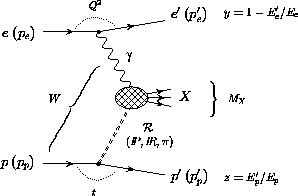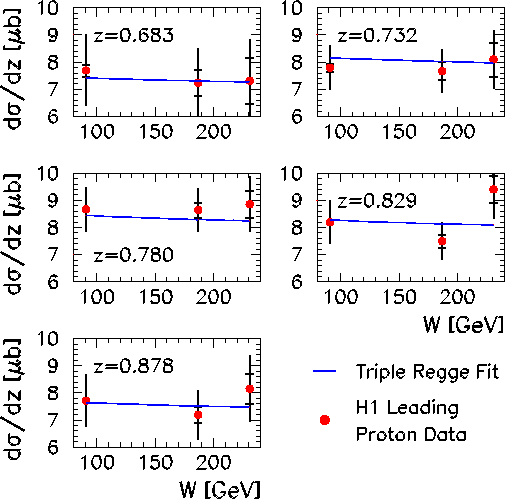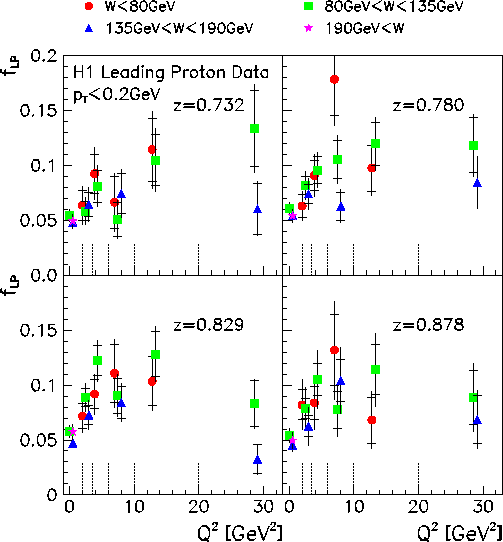The Process gamma p -> Xp'
We focus on the reaction gamma p -> X p' for real photons. The process
is sketched in the figure. The data sample comprises events where a leading
proton was detected under small scattering angles using the H1 forward
proton spectrometer some 80 m away from the main detector. The photon was
required to be real by requiring the electron to be found in one
of the small angle electron detectors, such that the photon virtuality
is small (Q2<0.01GeV2). The differential cross-section
dsigma(W,z)/dz was measured in the kinematic range W=91-231 GeV, z=0.66-0.90
and pt(p')<0.2GeV.


